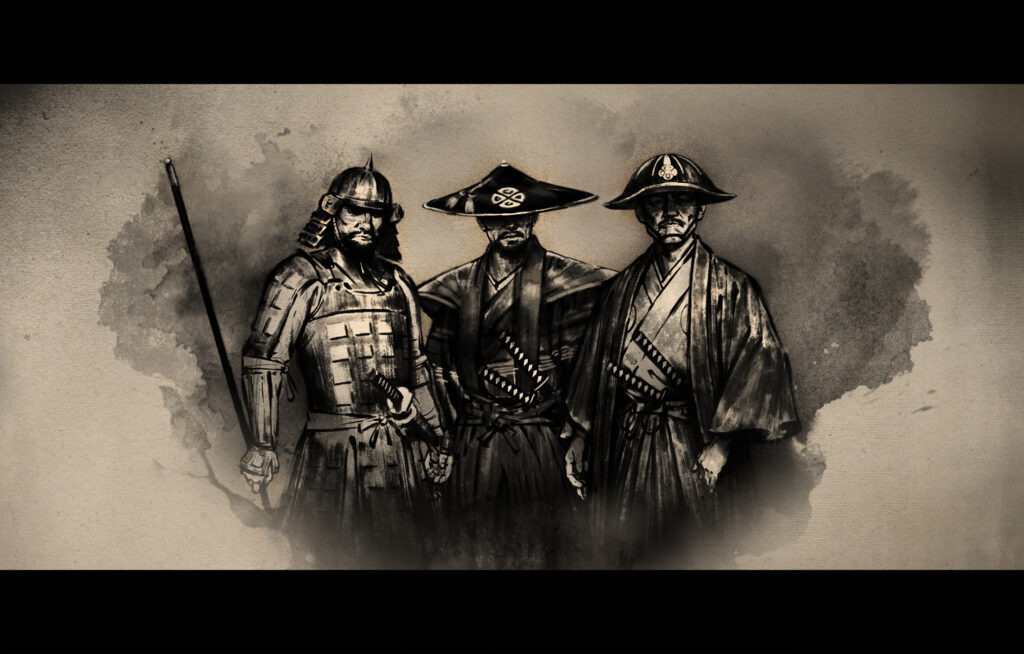
When the last of Japan’s three great unifiers, Tokugawa Ieyasu, came to power, he had a problem. His predecessors, Oda Nobunaga and Toyotomi Hideyoshi, had both failed to establish a lasting regime that could endure after their deaths. In 1603, Ieyasu created the Edo bakufu—also known as the Tokugawa Shogunate—to legitimize his rule. Thus the bakufu-han or bakuhan system was born.
Ieyasu assumed the title of shogun and enforced his supremacy over the daimyo who had survived the Battle of Sekigahara. He stripped the lands and wealth from his enemies and granted them to his allies. This included Hideyoshi’s son, Toyotomi Hideyori, whom Ieyasu would later force to commit seppuku at the Siege of Osaka in 1615.
Under the following Tokugawa shoguns, the Edo bakufu developed into the complete bakufu-han system. Han were the domains of individual daimyo. The shogun ruled Japan on the national stage, while daimyo governed their own han.
Most villages were heavily taxed, but largely left to their own devices. Peasants could appeal to the bakufu directly if their daimyo was abusing them. However, doing so was a great loss of face for their lord and often resulted in the peasant’s execution. As such, reaching out to the bakufu was a last resort to avoid a village being taxed into starvation.
A related system called sankin kotai, roughly translated as “alternate attendance”, required daimyo to ceremonially visit Edo every other year. Their wives and children were kept in Edo permanently as hostages. This forced daimyo to spend huge sums of money, keeping them in permanent financial difficulties.
The bakufu-han system was designed to ensure that Japan’s governance remained stable and its daimyo could not gain the kind of power they had during the Warring States Period. In Tale of Ronin, the result of that system is becoming clear to the people. Money troubles haunt peasants and samurai alike. The lack of conflict robs warriors of their purpose. And the bakufu continues to strip things from its enemies while rewarding its allies.
With hundreds of thousands of disillusioned, disenfranchised warriors abandoned by the Tokugawa Shogunate, players will soon discover that something needs to give.